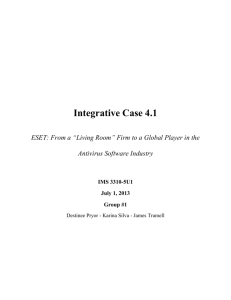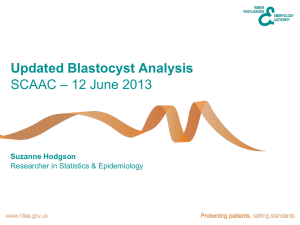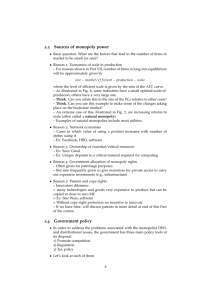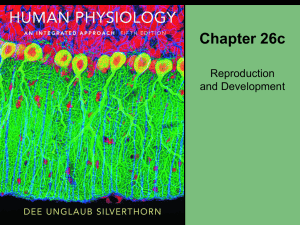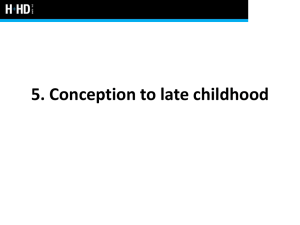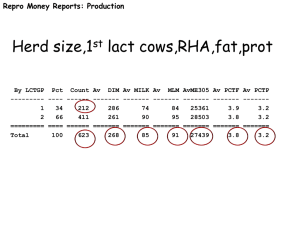Andrew Riddle, Medical Director Person Responsible, Nuffield
advertisement
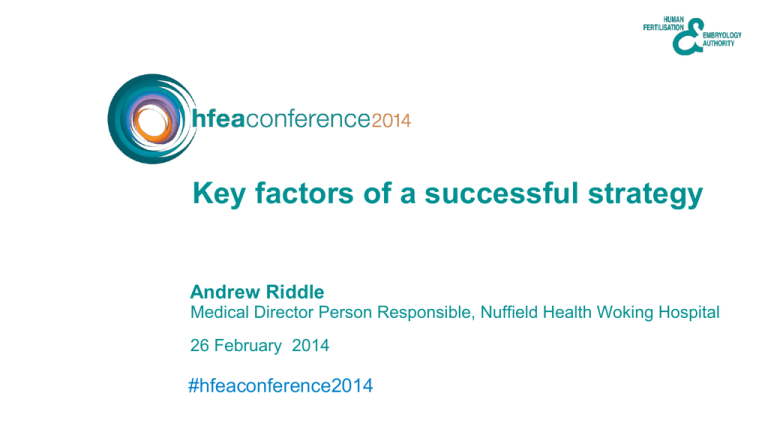
Key factors of a successful strategy Andrew Riddle Medical Director Person Responsible, Nuffield Health Woking Hospital 26 February 2014 #hfeaconference2014 ACE 2014 Oral Presentation Successful establishment of eSET criteria with multiple pregnancy rate reduced to below 5% How have our blastocyst criteria developed? Original Criteria (prior to 2011) Developing Criteria (2011-2012) Current Criteria (2013 onwards) <37 All patients ≤40 2 or more TQE on day 2 or 3 9 TQE 5 TQE 1 TQE and multiple average Increase in blastocyst transfers from quality embryos 6.4% in 2011 4to 72.1% in 2013 TQE Previous unsuccessful attempt when TQE transferred Long discussion with patient or Consider patient history 3 TQE If >40 consider blastocyst based on previous history 3 How have our eSET criteria developed? Original Criteria Current Criteria Consider for any patient <37 Consider for any patient <41 TQE to replace If the morula or blastocyst is good 1st cycle quality Any previous pregnancies 1st or 2nd cycle If spare embryos suitable for freezing Any previous pregnancies 4 Pregnancy rates eSET vs. DET: Year 4 Patient age eSET preg. rate eSET multiple preg. rate DET preg. rate DET multiple preg. rate Under 35 41.4 1.5 37.9 33.4 35-37 34.8 2.8 33.9 24.9 38-39 31.8 1.3 29.5 23.2 Other 35.1 1.9 28.3 27.0 All ages 38.8 1.6 32.9 29.2 Preg. rates blastocyst eSET vs. DET: Year 4 Patient age eSET blastocyst preg. rate eSET multiple preg. rate DET blastocyst preg. rate DET multiple preg. rate Under 35 44.6 1.6 44.0 40.3 35-37 38.7 2.0 42.0 29.4 38-39 35.7 1.5 38.8 28.7 Other 39.5 2.0 36.3 32.8 All ages 42.3 1.7 40.5 35.2 Overview of National trends Pre-policy Year 1 Year 2 Extended Year 3 Year 4 Proportion of transfers that are eSET(%) 4.9 11.3 15.9 19.7 26.1 Proportion of transfers that are blastocyst transfers (%) 13.0 20.6 30.3 38.8 48.2 Multiple pregnancy rate (%) 26.6 24.1 21.3 19.5 16.5 Multiple live birth rate (%) 23.6 21.4 19.2 17.4 15.6? Overall pregnancy rate (%) 30.3 32.1 31.6 32.6 32.9 Clinic data: % eSET fresh cycles 80.0 69.0 70.0 Y1: Jan 2009 to end 60.0 March 2010 50.0 Y2: April 2010 to end March 2011 40.0 29.4 30.0 20.0 14.5 11.3 26.1 19.7 15.9 13.9 Y3: April 2011 to end September 2012 Y4: October 2012 to 10.0 end September 2013 0.0 y1 y2 Woking Nuffield y3 National trend y4 Clinic data: % blastocyst transfers fresh cycles 80.0 73.0 70.0 Y1: Jan 2009 to end 60.0 March 2010 48.2 50.0 Y2: April 2010 to end 38.8 40.0 March 2011 30.3 30.0 Y3: April 2011 to end 24.5 20.6 September 2012 20.0 10.0 4.2 Y4: October 2012 to 3.4 end September 2013 0.0 Y1 Y2 Woking Nuffield Y3 National trend Y4 Clinic data: % CPR, MPR, MBR 45.0 38.2 40.0 Y1: Jan 2009 to end 33.1 35.0 March 2010 30.0 26.2 25.5 25.0 20.0 Y2: April 2010 to end 21.7 20.5 March 2011 18.4 16.3 15.8 15.4 Y3: April 2011 to end 15.0 September 2012 10.0 5.1 5.0 4.1 Y4: October 2012 to end September 2013 0.0 Y1 Y2 Clin Preg Rate Y3 MPR MBR Y4 Clinic data: CUSUM plot multiple births Multiple pregnancy rate by pregnancy, for all IVF, ICSI and FET cycles For period: Oct 2012 – Jan 2014 (as of 02/02/14) Number of births Year 4 centre performance: funnel plot Multiple live birth rate by live birth, for all IVF, ICSI and FET cycles For period: Oct 2012 – Sep 2013 (as of 09/01/14) at 10% Number of births Acknowledgements With Thanks to: Aimee Hetherington Rebecca Fabian Caroline Franklin All the team at Nuffield Health Woking Hospital Any questions? #hfeaconference2014 Discussion Andrew has replicated the practice in Sweden and achieved almost identical results in terms of MBR, but with a higher pregnancy rate using a blastocyst based programme. Table discussions What are the key factors of this successful strategy? What did you need to put in place to ensure that the majority of patients would be able to take part in a blastocyst transfer programme? What proportion of your patients have blastocysts for transfer What are the trigger points for review/audit? Feedback… Thank you. #hfeaconference2014

